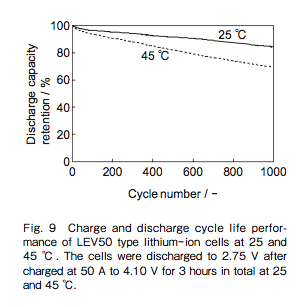alohart said:
Doogieca said:
Just home with mine tonight. 2014 Blue with USB for 23k even, including delivery plus got the great Mitsu finance package. This one of only two in Arizona. Let's hope my battery doesn't bake too much.
Congratulations!
If I lived in Arizona, I would make the reversible modifications (no warranty issues) that would result in some of the cooled air from the A/C being directed down into the battery compartment while driving, not just while Level 3 charging. I would then get CANion to monitor battery cell temperatures. When these temperatures exceed a certain level, I would engage my modified cooling system to direct cool air to the battery pack. I think this would minimize the degradation that is almost certain to occur in hot weather.
My i-MiEV doesn't have the Level 3 charging capability that makes this modification possible, so I have not done this to my i-MiEV (although, I doubt that my battery cell temperatures get too hot during short drives around Honolulu). If you have any questions about this modification, just ask in this forum for more information.
I would not make the modifications that would result in some of the cooled air from the A/C being directed down into the battery compartment while driving.
My tests using CaniOn showed that even directing all of the cooled air from the A/C to the battery during driving only lowered the temperature of the externally located battery temperature sensors a few degrees. Air cooling the i-MiEV batteries can only be marginally effective since the batteries do not have a heat sink to dissipate their heat. Additionally, frequently blowing outside air into the battery pack may lead to early corrosion of the battery management circuitry, and leaving the vent to the battery pack constantly open may lead to dirt and dust migrating to the battery pack from the i-MiEV's cabin.
Even if you drive your i-MiEV 60 miles a day at 30 mph, and you air cooled your battery constantly while you were driving, you are still only air cooling the battery 2 hours a day or about 8% of a 24 hour day. The i-MiEV battery temperature is typically the same as the ambient temperature. A more effective way to keep the i-MiEV battery cool is to try to control the ambient temperature the other 92% of the time.
Here is some test data for the i-MiEV's LEV50 battery capacity for different temperatures:
Taken from the following technical report:
http://www.gs-yuasa.com/en/technic/vol5/pdf/05_1_021.pdf
This data represents 1000 times discharging the battery to 2.75V. The lowest my battery has been discharged is 10.5% (the turtle) and the lowest cell was at 3.66V. Also, this data represents charging the battery at 50 amps. I typically charge my battery at Level 2, which is about 7.6 amps according to CaniOn. Also, 45 degrees Celsius equates to 113 degrees Fahrenheit. These tests say that the battery was charged at 45 degrees Celsius, meaning ambient temperature, so that the battery actually got hotter charging at 50 amps.
To date, we i-MiEV owners do not have any data on the remaining capacity of our batteries. We also do not have any data on the difference in remaining battery capacity for i-MiEV's operating in colder and hotter climates.
Also, when our batteries have reached the end of their warranty at 100,000 miles, we will be able to replace them. A new Nissan Leaf battery is currently $5,500.00 with the return of the old battery. If you put 15,000 miles a year on your i-MiEV, it will take you over six years to reach 100,000 miles.
I would recommend the following for caring for your battery:
1. If possible, keep your i-MiEV in an area where the ambient temperature is not excessive. Park in the shade if possible, or in a temperature controlled garage.
2. Do not repeatedly charge your battery when it is at or near full charge.
3. If you are not going to use your i-MiEV for an extended period of time store it with 2-4 bars charge.
4. Fully charge your i-MiEV by Level 1 or Level 2 charging at least once every 2 weeks.
5. At least once every three months recharge your i-MiEV by Level 1 or Level 2 charging from 2 bars or less to full.
6. Normally charge your i-MiEV using Level 1 or Level 2. Use Level 3 DC Quick Charging only when you need extended range.
7. Don't use maximum power (press the accelerator to the floor) when your battery charge is low.
8. Don't worry about the battery. The i-MiEV is loads of fun to drive. Enjoy it!



































